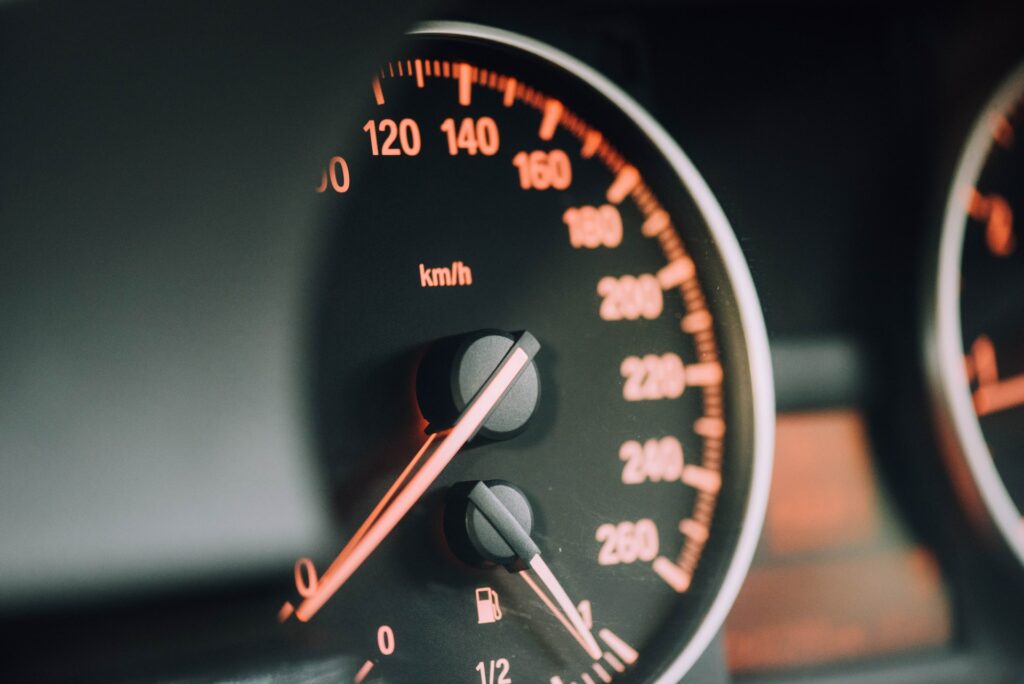Speed and Stopping Distance
Stopping distances can be found in your Rues of the Road Book. For dry conditions on page 95 and page 96 for driving in wet conditions.
A good way to judge a safe distance behind another car or vehicle on the road is to apply the two-second rule.

Two-Second Rule
In good dry conditions an alert driver, who is driving a car with first class tyres and brakes, needs to be at least two seconds behind the vehicle in front. In bad conditions, double the safety gap to at least four seconds or even more.
How to Measure
Choose an obvious stationery reference point ahead, such as a bridge, a tree or a road sign. When the vehicle ahead passes the object, say to yourself, “only a fool breaks the two-second rule”. If you read the object before you finish saying it, you are too close to the car in front of you. In bad conditions, say it twice before reach the object.
Remember, multiple collisions often happen because the drivers involved were:
- Driving too close
- Unable to break in time
* You can avoid such accidents by looking well ahead and keeping your distance. Give yourself time to react.
Defensive Driving
When the vehicle behind is driving too close to you, ease off gradually and increase the gap between you and the vehicle in front. This will give you more time to react if the driver ahead should slow down or stop suddenly.